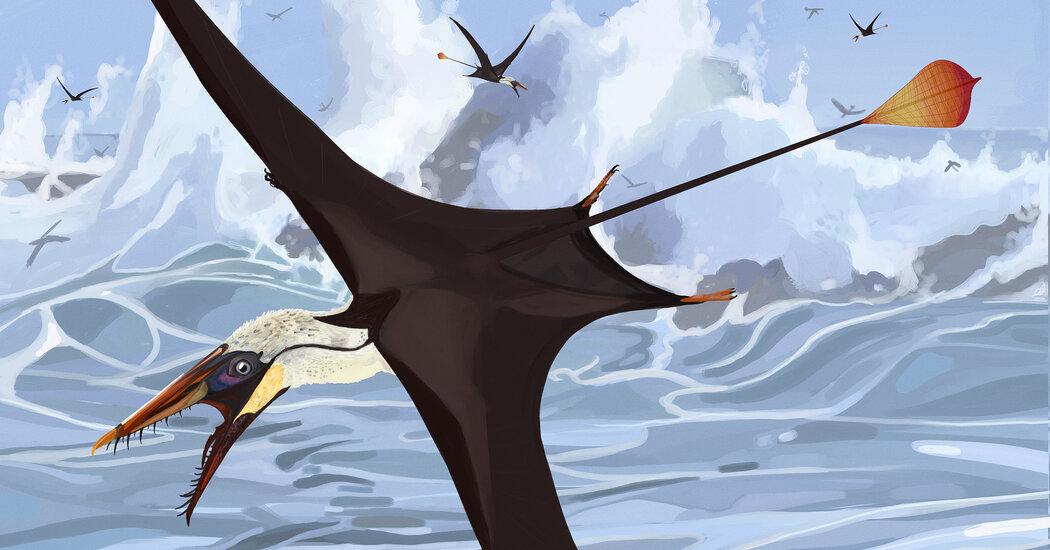Scientists identified new structures in the tail vanes of the prehistoric flying reptiles.
Above the shores of prehistoric seas and lakes, pterosaurs roamed the skies. They were feathered creatures that ranged in size from pigeons to planes, and the first vertebrates known to have been able to fly. And for millions of years, they had long tails ending in a prominent flap of skin called a vane.
Paleontologists have long wondered about this strange appendage and its purpose. A team of scientists using a laser scanning technology have found new structures in four pterosaur fossils that helped keep the vane stiff, suggesting it aided maneuvering in flight.
The study, published in December in the journal eLife, shows that “even fossils that we knew and studied in detail for hundreds of years might have new things to show if you develop new technology to see them,” said Natalia Jagielska, a paleontologist at the Lyme Regis Museum in England and the paper’s lead author.
Dr. Jagielska, also a professional artist, became involved in the research after Michael Pittman, a paleontologist at the Chinese University of Hong Kong, approached her about illustrating a children’s book. They teamed up to examine pterosaur fossils in collections in England and Scotland.
After surveying over 100 pterosaur specimens, scientists picked four from the species Rhamphorhynchus, which often had diamond-shaped, kitelike tail vanes, for follow-up with laser-stimulated fluorescence. Dr. Pittman and Thomas G. Kaye, director of the Foundation for Scientific Advancement and an author of the study, have promoted the technique for exploring dinosaur-era remains and for archaeological investigations.
